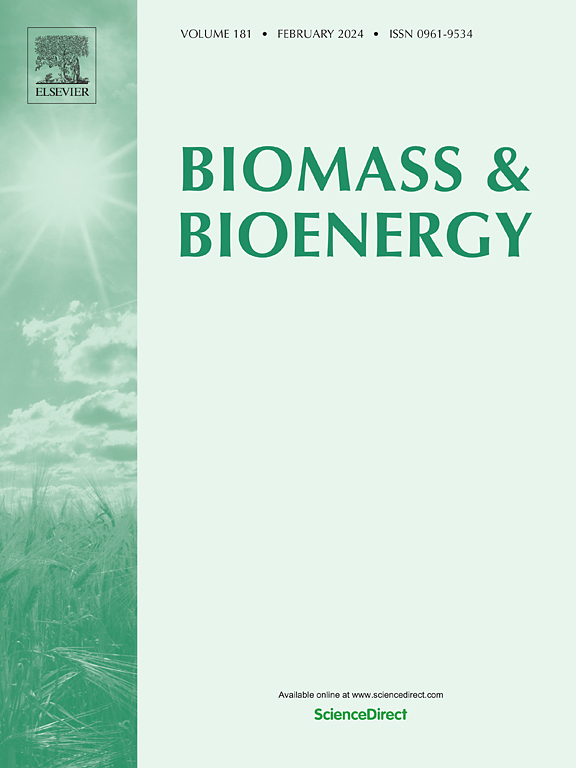基于机器学习的生物炭CO2吸附性能预测
IF 5.8
2区 生物学
Q1 AGRICULTURAL ENGINEERING
引用次数: 0
摘要
机器学习在高维数据处理和复杂问题分析方面显示出巨大的潜力,是生物炭吸附CO2建模研究的一种很有前途的方法。在这项研究中,我们创新性地利用深度神经网络(DNN)、随机森林(RF)、梯度增强决策树(GBDT)、极端梯度增强(XGB)和光梯度增强机(LGBM)算法,从生物炭的活化条件预测了生物炭对CO2的吸附。对7种不同的输入特征组合的比较表明,保留所有激活条件特征的组合预测精度最高,并且激活条件的引入对其他特征也有影响。LGBM模型对数据集具有较高的预测精度和预测性能(R2为0.956,MAE为0.245,RMSE为0.350)。分析了该模型下各特征的重要性,结果表明,活化温度和保护气体流量对CO2吸附的影响大于活化剂类型和活化比,活化时间对CO2吸附的影响最小。本研究为生物炭吸附CO2的预测研究提供了新的视角和方法,也为深入了解相关作用机制提供了参考。本文章由计算机程序翻译,如有差异,请以英文原文为准。
Prediction of CO2 adsorption performance of biochar based on machine learning
Machine learning shows great potential in high-dimensional data processing and complex problem analysis, and is a promising approach for biochar adsorption CO2 modeling research. In this study, we innovatively predicted the CO2 adsorption by biochar from the activation conditions of biochar using deep neural network (DNN), random forest (RF), gradient boosted decision tree (GBDT), extreme gradient boosting (XGB), and light gradient boosting machine (LGBM) algorithms. A comparison of seven different combinations of input features revealed that the best prediction accuracy was found for the combination that retained all the activation condition features and that the introduction of the activation condition had an effect on the other features as well. The LGBM model had a higher prediction accuracy and prediction performance for the dataset (R2 of 0.956, MAE of 0.245, and RMSE of 0.350). The importance of the features under this model was also analyzed, and the results showed that the activation temperature and the flow rate of the protective gas were more important than the type of activator and the activation ratio for CO2 adsorption, and activation time had the least effect. This study provides new perspectives and methods for the prediction study of CO2 adsorption by biochar and also provides a reference for a deeper understanding of the related mechanism of action.
求助全文
通过发布文献求助,成功后即可免费获取论文全文。
去求助
来源期刊

Biomass & Bioenergy
工程技术-能源与燃料
CiteScore
11.50
自引率
3.30%
发文量
258
审稿时长
60 days
期刊介绍:
Biomass & Bioenergy is an international journal publishing original research papers and short communications, review articles and case studies on biological resources, chemical and biological processes, and biomass products for new renewable sources of energy and materials.
The scope of the journal extends to the environmental, management and economic aspects of biomass and bioenergy.
Key areas covered by the journal:
• Biomass: sources, energy crop production processes, genetic improvements, composition. Please note that research on these biomass subjects must be linked directly to bioenergy generation.
• Biological Residues: residues/rests from agricultural production, forestry and plantations (palm, sugar etc), processing industries, and municipal sources (MSW). Papers on the use of biomass residues through innovative processes/technological novelty and/or consideration of feedstock/system sustainability (or unsustainability) are welcomed. However waste treatment processes and pollution control or mitigation which are only tangentially related to bioenergy are not in the scope of the journal, as they are more suited to publications in the environmental arena. Papers that describe conventional waste streams (ie well described in existing literature) that do not empirically address ''new'' added value from the process are not suitable for submission to the journal.
• Bioenergy Processes: fermentations, thermochemical conversions, liquid and gaseous fuels, and petrochemical substitutes
• Bioenergy Utilization: direct combustion, gasification, electricity production, chemical processes, and by-product remediation
• Biomass and the Environment: carbon cycle, the net energy efficiency of bioenergy systems, assessment of sustainability, and biodiversity issues.
 求助内容:
求助内容: 应助结果提醒方式:
应助结果提醒方式:


